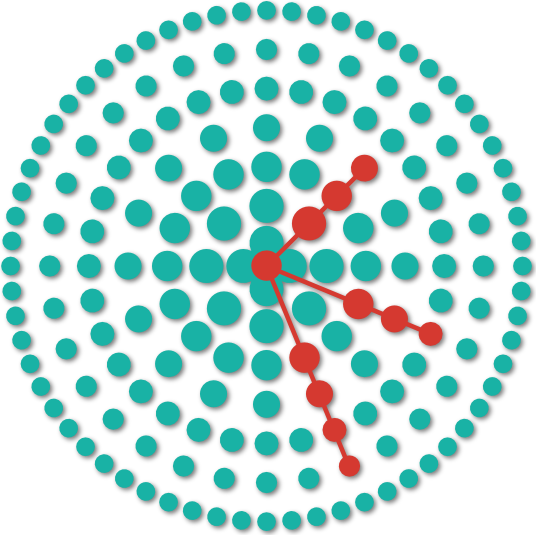Diagnosing Pineoblastoma


Pineoblastoma is a rare and aggressive brain tumor that arises in the pineal gland, a small organ deep within the brain responsible for controlling sleep patterns. Due to its location and the complexity of the brain structures around it, diagnosing pineoblastoma can be challenging.
Early diagnosis is crucial, as it allows for prompt treatment which can improve the patient's prognosis and survival rate. This article explores how pineoblastoma is diagnosed, covering key tests and procedures, and highlighting an accurate, timely diagnosis.
Symptoms and Initial Evaluation
The diagnosis of pineoblastoma often begins when patients experience symptoms that suggest a problem in the brain. Common pineoblastoma symptoms include persistent headaches, nausea, vision changes, sleep disruptions, and balance or coordination issues.
While these symptoms can occur alongside many other conditions, their persistence or worsening may lead to further testing. During the initial evaluation, a physician will review the patient’s medical history and perform a physical examination, focusing on brain function.
If a brain tumor is suspected, the doctor may recommend additional diagnostic tests to confirm its presence. Additional information regarding its size, location, and impact on normal function will be collected to guide individual treatment plans.
Imaging Tests for Pineoblastoma
Imaging studies are essential for diagnosing brain tumors like pineoblastomas. These tests provide doctors with detailed images of the brain and determine whether there is a tumor present.
- Magnetic Resonance Imaging (MRI): MRI is the most common and preferred method for diagnosing pineoblastoma. It uses magnetic fields and radio waves to create highly detailed images of the brain. It helps identify the tumor's size, location, and whether it has spread to other parts of the brain or spinal cord. This is necessary for planning treatment.
- Computed Tomography (CT) Scan: While less detailed than an MRI, CT scans can also help detect pineoblastoma, especially if there are concerns about bone involvement or if MRI is unavailable. CT scans use X-rays to produce cross-sectional images that reveal abnormal growths and areas of increased pressure.
- Advanced Imaging Techniques: In some cases, additional imaging techniques like magnetic resonance (MR) spectroscopy or diffusion tensor imaging may be used to gather more information about the tumor’s characteristics, which can assist in planning surgery or other treatments.
Why should you have your surgery with Dr. Cohen?
Dr. Cohen
- 7,500+ specialized surgeries performed by your chosen surgeon
- More personalized care
- Extensive experience = higher success rate and quicker recovery times
Major Health Centers
- No control over choosing the surgeon caring for you
- One-size-fits-all care
- Less specialization
For more reasons, please click here.
Biopsy and Microscopic Examination
While imaging can strongly suggest the presence of a pineoblastoma, a definitive diagnosis requires a biopsy. During a biopsy, a small sample of the tumor tissue is removed and examined under a microscope to confirm the diagnosis and assess its characteristics, including its aggressiveness.
- Surgical Biopsy: In most cases, a surgical biopsy is performed during the initial surgery to remove as much of the tumor as possible. This approach allows the surgical team to both confirm the diagnosis and begin treatment.
- Stereotactic Biopsy: If the tumor is in a difficult-to-reach area or surgery is not immediately possible, a stereotactic biopsy may be performed. This minimally invasive procedure uses imaging guidance to precisely locate and sample the tumor
Lumbar Puncture (Spinal Tap)
Pineoblastomas can sometimes spread to other areas of the central nervous system, including the spinal cord. To check for this, doctors may perform a lumbar puncture (spinal tap) to collect and analyze cerebrospinal fluid (CSF). This test can detect tumor cells or other signs that the cancer has spread (metastasized), which is critical for staging the disease and determining the most effective treatment plan.
Importance of Accurate Staging
Accurate staging is essential for developing an effective treatment plan for pineoblastoma. Staging refers to assessing how far the cancer has spread and can significantly influence pineoblastoma prognosis and life expectancy.
For example, if the tumor is confined to the pineal region, the outlook may be more favorable, allowing for focused, localized treatment. However, if the tumor has spread to other parts of the brain or spinal cord, a more aggressive, systemic approach may be necessary.
Accurate staging helps healthcare teams know the appropriate level of care a patient requires for their specific situation.
Treatment and Prognosis
While a detailed overview of pineoblastoma treatment will be provided in a separate article, it’s helpful to mention that treatment typically involves surgery, radiation therapy, and chemotherapy. The effectiveness of these treatments, and therefore the individual prognosis, often depends on early diagnosis and how effectively it can be removed and controlled.
Early and accurate diagnosis can improve the chances of better outcomes and may influence the overall pineoblastoma survival rate. If you or a loved one is experiencing persistent symptoms that may suggest a brain tumor, seeking prompt medical advice is important. Early diagnosis can make a meaningful difference in treatment success and quality of life for those affected by pineoblastoma.
Key Takeaways
- Diagnosing pineoblastoma starts with recognizing symptoms like headaches, vision problems, and balance issues, leading to further evaluation.
- Imaging tests, particularly MRI, play a crucial role in detecting and assessing pineoblastoma.
- A biopsy is required to confirm the diagnosis and understand the tumor's characteristics, guiding treatment decisions.
- Lumbar puncture may be used to check if the tumor has spread to other parts of the central nervous system, such as the spinal cord.
- Accurate diagnosis and staging are critical to improving pineoblastoma prognosis and planning the most effective treatment approach.











